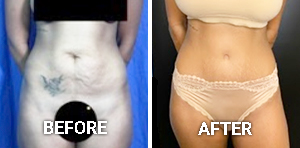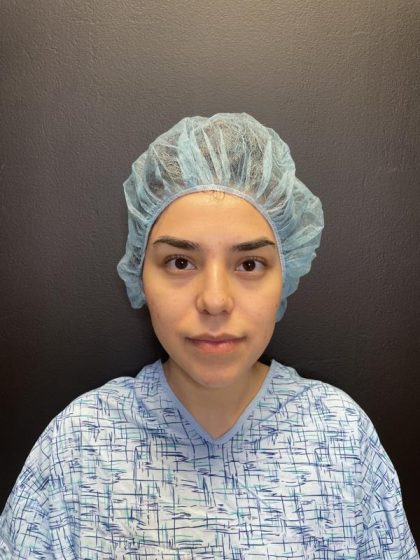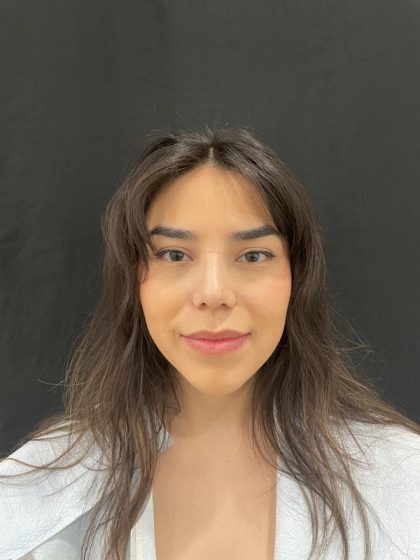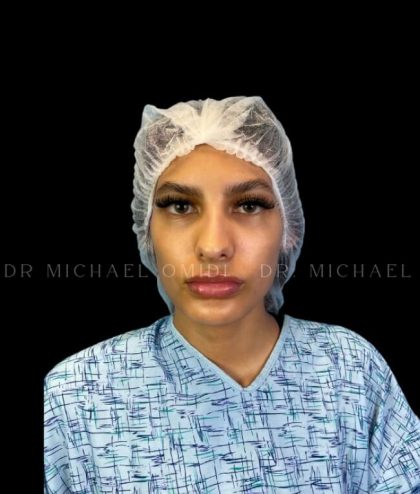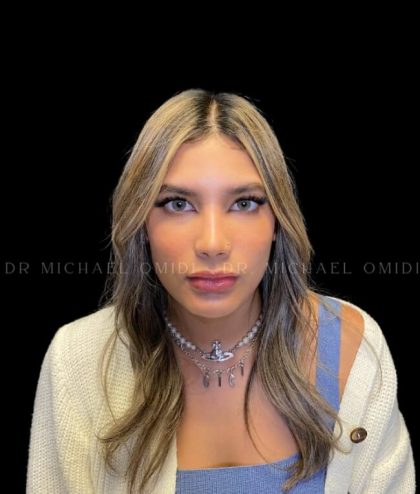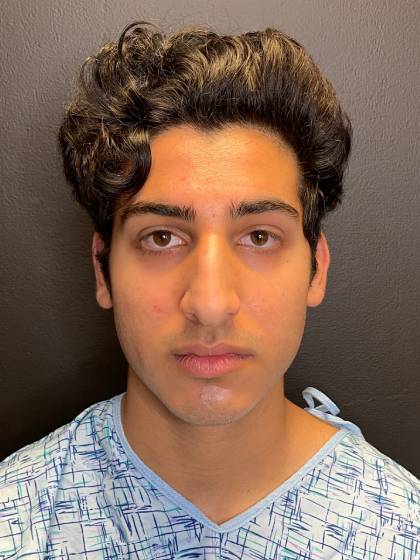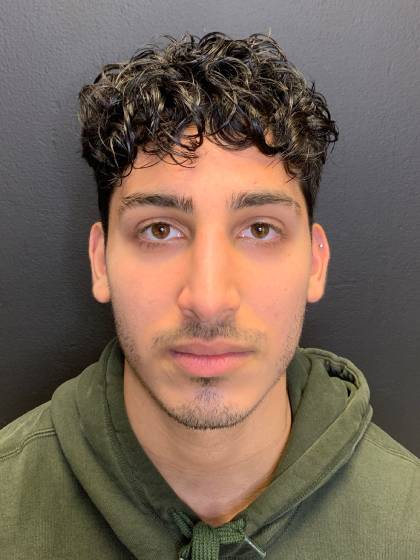Saddle Nose Deformity Correction
Conveniently located to serve the areas of Beverly Hills and Greater Los Angeles
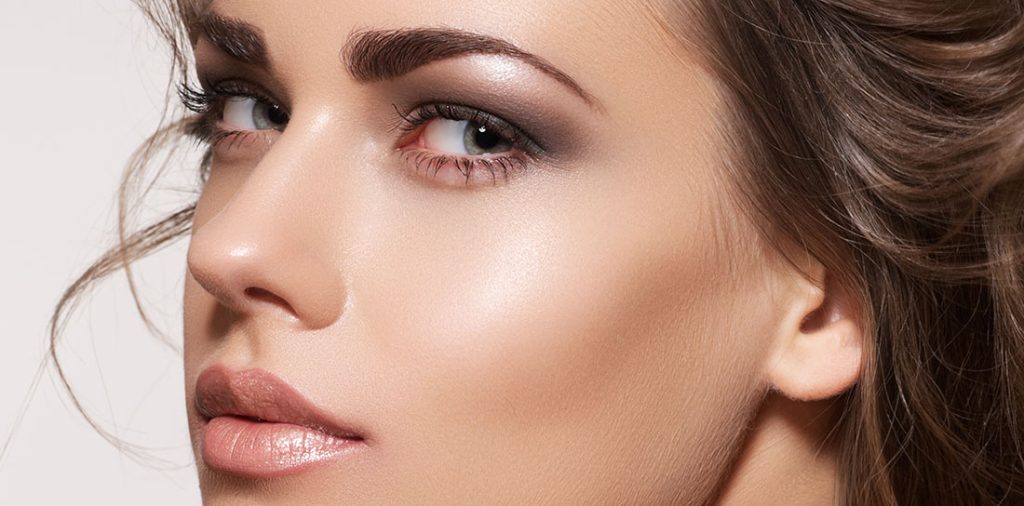
Saddle nose deformity (SND) is a challenging condition that results from nasal trauma, infection, or a prior nasal surgery. (1) Bone, cartilage, and membranous tissues should work together to provide structure and support, creating a clear airway. However, when parts of this vital anatomy are damaged, it can cause drastic cosmetic changes and breathing problems.
Patients with SND experience nasal septum weakness, and in the most severe cases, structural collapse of the nose. This deterioration of the integrity of the nose causes significant problems. Patients with SND may seek treatment because they are unhappy with the appearance of their nose, and/or they are experiencing breathing difficulties. In most cases, it’s a combination of the two. However, through reconstructive surgery, a surgeon can correct the structural deficits using grafts from other areas of the body. This corrects airway dysfunction and creates a straighter nasal profile.
With over 17 years of rhinoplasty experience, Michael Omidi, MD, FACS is a double board-certified plastic surgeon who can help. At his office in Beverly Hills, he provides patients with solutions to functional and aesthetic nose issues, allowing them to look beautiful and breathe easy once more. Call (310) 281-0155 or contact us using our simple online inquiry form to book your personal consultation, and get help to rebuild your nose and your confidence!
Contents
Before and After Photos
Nasal Anatomy
The nose is a complex facial structure composed of skin, bone, epithelial membranes, and cartilage. It’s a spacious, humidified area that improves the quality of the air we breathe by moistening it and filtering out external particles. (1) The reason why we can move the lower part of our nose is that it is not bony, but is instead made of flexible cartilage. Hyaline cartilage is smooth and pliable. It makes up a large part of the structure of the tip of the nose and the majority of the nasal septum that divides the nasal cavity.
The nasal septum is a thin ridge of tissue that runs through the center of the nose. Though the majority of the nasal septum is made of cartilage, it is internally supported by a deeper structure called the ethmoid bone. The small, ridged areas in the nose are known as turbinates. These structures streamline airflow, and also warm and humidify air as it enters the body.
Areas of the Nose
- The Lower Nasal Third: Hyaline cartilage makes up the tip of the nose, a small part of the nostrils, and part of the nasal septum. This is also known as the alar cartilage, which contains the nasal valves – areas in the nostrils that control airflow.
- The Middle Nasal Third: Also called the osseocartilaginous vault, this area connects the tip of the nose with the bony upper portion. Where bone and cartilage meet is known as the dorsal keystone area. It shapes and provides structure and stability to the nose. (2)
- The Upper Nasal Third: This area is supported by the nasal bones that form the rigid structure of the upper nasal vault.
What Happens to a Nose with SND?
Saddle nose deformity is a condition that causes the nasal bridge to collapse, usually in the middle nasal third. In a normal nose, the nasal septum is located centrally, and is usually relatively straight to allow air to flow through as easily as possible. Many people receive septoplasty surgery when their nasal septum has deviated from the center. But with SND, a significant concave dip in the nasal contour develops, referred to by surgeons as a retro displaced profile line. (3)
As well as causing the shape of the nose to change, this collapse can weaken the osseocartilaginous vault, resulting in nasal valve failure, which can affect air flow. This can be very distressing for patients to deal with, and functionally it can make breathing through the nose more difficult. With SND correction, a surgeon uses modified septoplasty techniques and cartilage grafts to reshape the nose and reinstate sufficient airflow.
Causes of Saddle Nose Deformity
- Nasal Trauma: A significant trauma to the nose can cause the nasal bridge to weaken and collapse. Nasal trauma is the number one reason why saddle nose deformity occurs.
- Prior Surgery: A primary rhinoplasty or septoplasty can cause SND, especially if it was overly aggressive and removed too much nasal tissue. If a septoplasty is performed on a younger person who has not finished growing, there is a higher likelihood that they will need a revision surgery. (4)
- Infection: SND can be caused by diseases and infections. Infections such as syphilis, leprosy, and in extremely rare cases, Covid-19 are all documented as causing nasal framework collapse. (5)
- Septal Hematoma and Abscesses: Blood clots and abscesses around the nasal septum can result in SND. Left untreated, these conditions can leave a hole called a septal perforation which can weaken nasal structure.
- Autoimmune Disease: Autoimmune conditions that cause SND include granulomatosis with polyangiitis, relapsing polychondritis, and sarcoidosis.
- Intranasal Drug Use: Prolonged cocaine use can cause damage to the mucous membranes in the nose, causing septal perforation and collapse in the most severe cases.
Benefits of Saddle Nose Deformity Correction
Saddle nose deformity is a condition that can cause considerable frustration and suffering. As well as anecdotal evidence, research data reveals that nasal deformity causes unwanted psychological effects. (6) Dr. Omidi is an accomplished rhinoplasty expert in Beverly Hills. And during a saddle nose deformity correction procedure, he uses his extensive knowledge of nasal anatomy and surgical skills to reform the nose to a more favorable shape. Once the nose is fully healed, patients can experience improved self-esteem and better overall quality of life as their nasal anatomy is both aesthetically pleasing and functional once more.
Ready to receive corrective surgery for saddle nose deformity? Call us at (310) 281-0155, or fill out this form to get started.
Candidates
Saddle nose deformity is challenging to manage, especially in more severe cases. However, Dr. Omidi is one of the most prominent surgeons in this field of plastic surgery. At a personal consultation, he will determine if an AND correction procedure is right for your unique circumstances. Candidates are healthy individuals who have been thoroughly counseled on the risks and rewards associated with the corrective procedure. You may not be able to get this type of surgery in the following circumstances.
- Nasal Malignancies (Cancer)
- Serious Chronic Illness
- Autoimmune Conditions
- Relapsing Polychondritis
Personal Consultation
Your personal consultation with Dr. Omidi takes place in the heart of Beverly Hills. During this meeting, he will look at your medical history and examine your external and internal nasal anatomy with a nasal scope. Please tell him about the difficulties you have experienced as a result of saddle nose deformity, and what you hope to achieve from surgery. Once he has considered every aspect of your care, and he concludes that the surgery is right for you, he will make arrangements to schedule your procedure and provide you with the documentation and instructions you will need to prepare well for the procedure.
Procedure
There are three classifications of saddle nose deformity, minimal, moderate, and severe. The extent of structural collapse will dictate the method Dr. Omidi will use to restore the nose.
Minimal Saddle Nose
The height of the septum may be restored using a modified extracorporeal rhinoplasty. The nasal septum is removed and restored, then using spreader grafts that widen the middle third of the nose, it is repositioned. Dr. Omidi makes adjustments to improve the function of the internal nasal valves. The base of the nose is also tightened and secured for a natural nasal appearance that works in harmony with your other facial features. (7)
Moderate Saddle Nose
In more severe cases, there may not be enough septal cartilage to reconstruct the collapsed nasal dorsum. As a result, Dr. Omidi may use conchal cartilage graft from the ear. Grafts can be carefully stacked to produce a straighter nasal dorsum. This method allows for tailored, precise reconstruction. If a patient has experienced nasal tip rotation, or reduced tip projection further support may be added to correct the position of the tip of the nose. (7)
Severe Saddle Nose
In the most severe cases, significant septal reconstruction is required. Where serious nasal trauma has occurred, robust grafts from another area of the body are usually the best choice. Dr. Omidi may use costal cartilage from the 7th, 8th, or 9th ribs to strengthen the septum. He does so by reforming the grafts into a prefabricated L shape. This graft may be placed within the nose via the nostril. (7) Although aesthetic nasal contouring is limited in severe cases of saddle nose deformity, Dr. Omidi will use his surgical skills to create the best nasal profile achievable in every case.
Cost of Saddle Nose Deformity Correction in Los Angeles, CA
The cost of your surgery will be determined after a thorough evaluation of the degree of your SND, and whether any additional adjustments to the nasal structure need to be made. Please use our financing page to learn more about Care Credit and payment plans.
Finding the best surgeon for more challenging nasal surgery is vital. And with 17 years of experience, Dr. Omidi is ready to assist you. To book a personal consultation and discuss saddle nose correction, please get in touch with us by calling (310) 281-0155 or by completing this simple online form with the details of your request.
Award-winning, double board-certified plastic surgeon Dr. Omidi is renowned in Beverly Hills, Greater Los Angeles and beyond. Be sure to read his blog here, watch his videos on YouTube, and help us to reach our goal of 50K followers on Instagram!
References
- Freeman SC, Karp DA, Kahwaji CI. Physiology, Nasal. PubMed. Published 2020. https://www.ncbi.nlm.nih.gov/books/NBK526086/
- Palhazi P, Daniel RK, Kosins AM. The Osseocartilaginous Vault of the Nose: Anatomy and Surgical Observations. Aesthetic Surgery Journal. 2015;35(3):242-251. doi:10.1093/asj/sju079
- Frodel J. Primary and Secondary Nasal Bone Grafting After Major Facial Trauma. Facial Plastic Surgery. 1992;8(04):194-208. doi:10.1055/s-2008-1064651
- Bishop R, Sethia R, Allen D, Elmaraghy CA. Pediatric nasal septoplasty outcomes. Translational Pediatrics. 2021;10(11):2883-2887. doi:10.21037/tp-21-359
- Zhu D, Tham T, Georgolios A. Saddle nose deformity: a rare complication of COVID-19 infection. Otolaryngology Case Reports. 2022;23:100428. doi:10.1016/j.xocr.2022.100428
- John J, Gupta R, Grossbauer A, et al. Outcomes Associated with Nasal Reconstruction Post-Rhinectomy: A Narrative Review. Archives of Plastic Surgery. 2022;49(2):184-194. doi:10.1055/s-0042-1744426
- 12.
- Durbec M, Disant F. Saddle nose: Classification and therapeutic management. European Annals of Otorhinolaryngology, Head and Neck Diseases. 2014;131(2):99-106. doi:10.1016/j.anorl.2013.01.006





